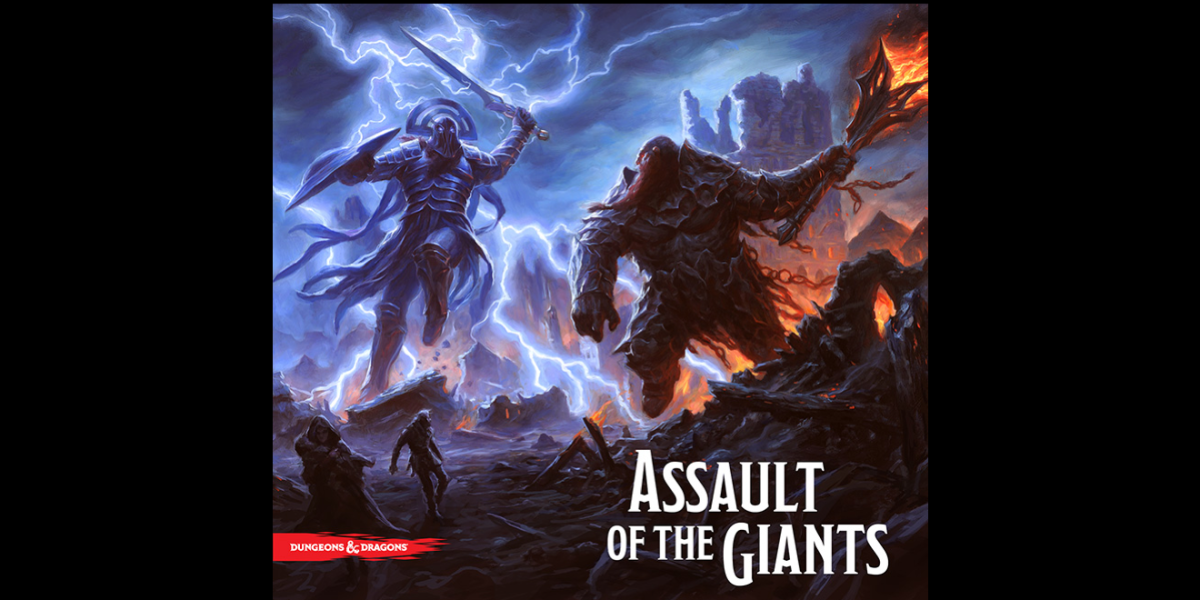Dudes-on-a-map games have been around for a long time with Risk being one of the most well-known, not only of this style, but it's one of the most well-known boardgames period. While you can have fun in games like Risk, they usually last too long, and the winner isn't determined until all of the other players have been eliminated from the game. The fun and frustration factor that comes with that style of play are out of whack, which is why many people who have played Risk don't like it. On top of being a pure war of attrition, there is no motivation to win other than winning itself, and the war machine churns simply to make more war.
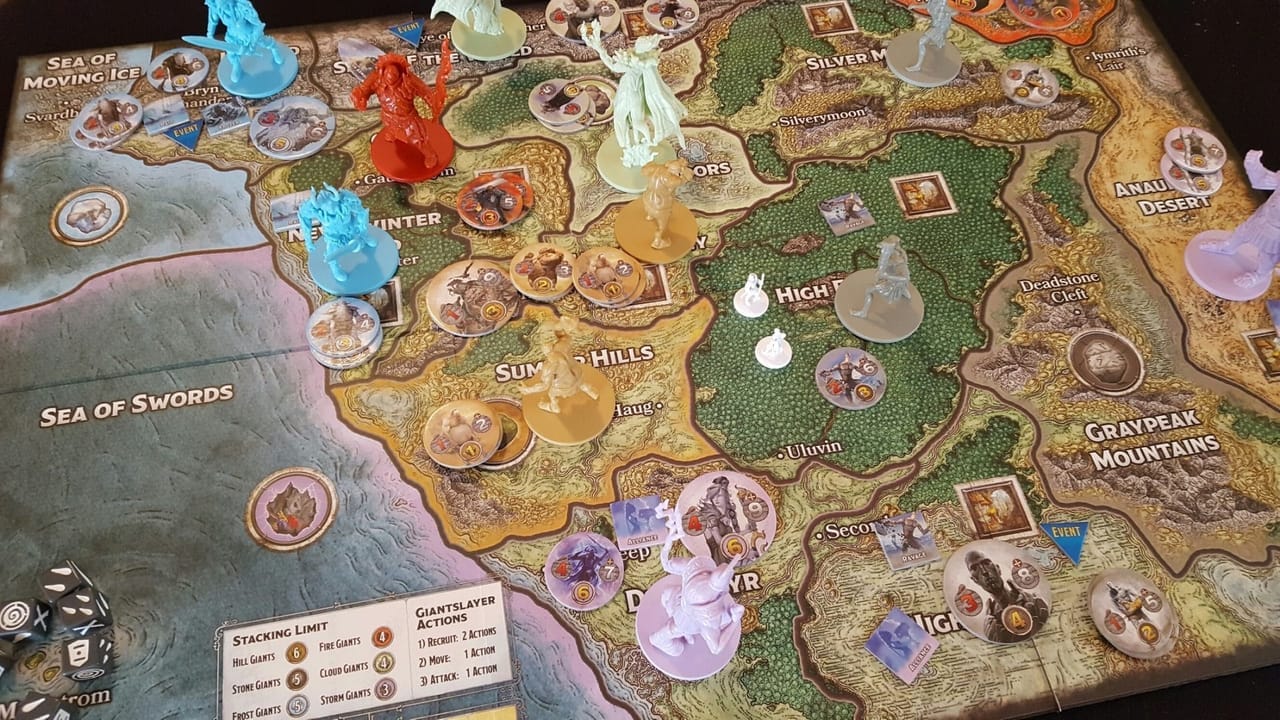
When I first laid eyes on Assault of the Giants, my mind couldn't help but draw a comparison with Risk, which is where my mind always goes first when I see a dudes (or Giants in this case)-on-a-map game. Once you dig in to the it though, Assault of the Giants quickly shows that, while it may have taken some inspiration from older games, it is a modern, elegant game that is far deeper than it first appears. Make no mistake, you can still wage war in this game, but combat is only a small piece of the overall puzzle, and it is a tool used by the players to accomplish their goals, rather than being the entire goal unto itself.
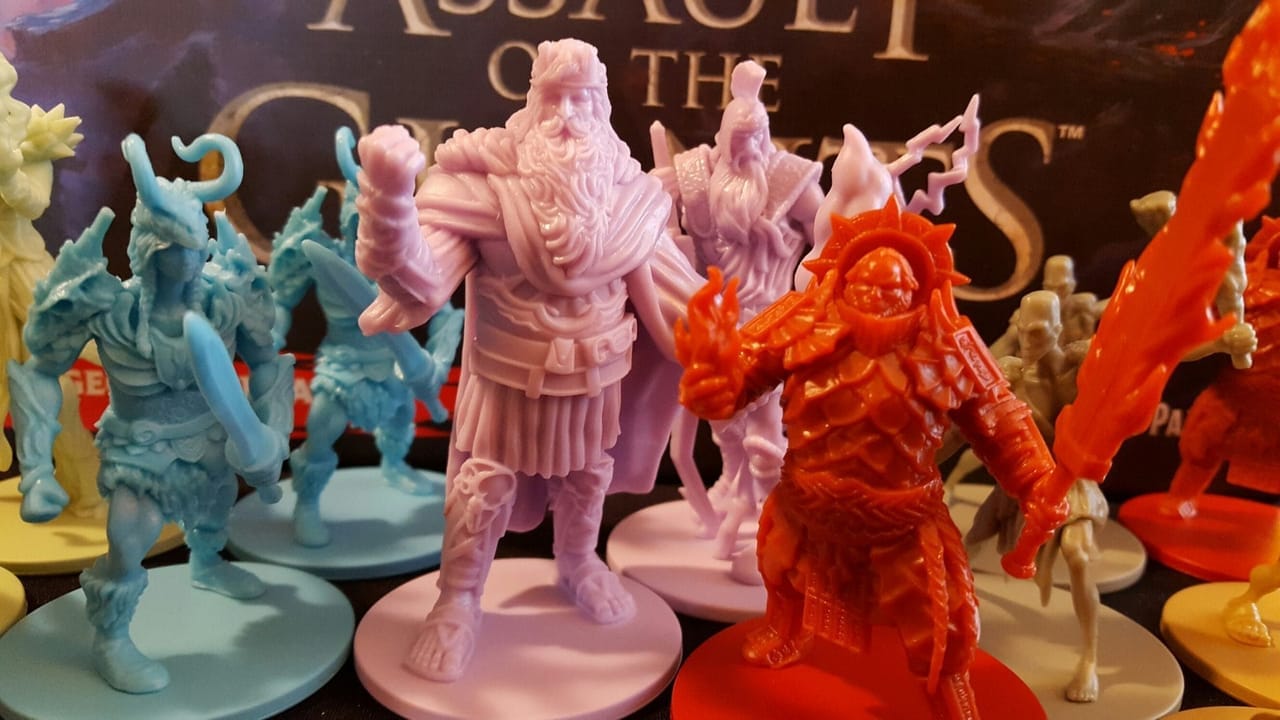
While the ultimate goal of the game is to come of with the most Ordning points and reach the pinnacle of giant-dom, each of the game's six giant races has a different path to achieve that victory. You can't play the Fire Giants the same way you'd play the Hill Giants and expect to win the game. In fact, you can't play the Fire Giants in the same way that you'd play the Hill Giants period. The six races are statistically and mechanically different, and, most importantly, they feel different from one another, which keep the game fresh across multiple plays.
Even though each race walks a unique path, the world isn't big enough to accommodate everyone's needs. This lends the game's inevitable conflicts a more organic feel. Combat, conflict, politicking, and posturing are necessary tools to use in order to advance your own agenda. Battle doesn't usually happen just for battle's sake but is instead most successfully used as a tool to deal with the other players once you begin to bump into them. The different races' goals are designed in such a way that conflict between the different races is nigh inevitable, but war is a costly endeavor and, thanks to the excellent card-play of Assault of the Giants, a course of action that is best considered carefully.
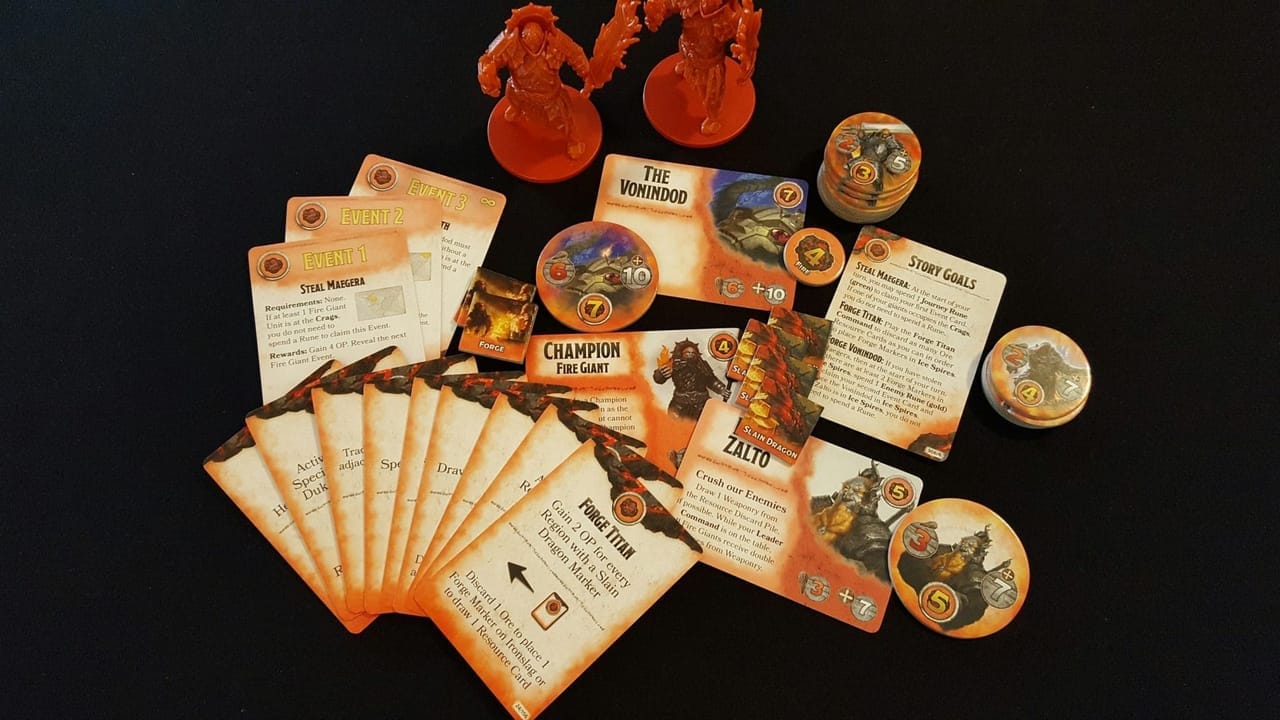
Every player has a hand of 9 cards that control what they can do in the game. Most of the actions that the cards allow are similar, or the same, as actions that the other races can take, but each race also has a unique card that scores them points for pursuing their strategy. Cards are left on the table when played, and can only be picked back up into your hand after you've taken the Rest action, so it is important to plan out your turns, and take actions in an order that will best help you succeed. On top of that, each action either powers up your combat prowess (generally the earlier you play these the better as they let you re-roll combat dice etc) or allow you to take expanded actions based on the number of cards you have already played onto the table. Some of the actions absolutely beg to be played early, and others really only kick off if you can play them as late as possible.
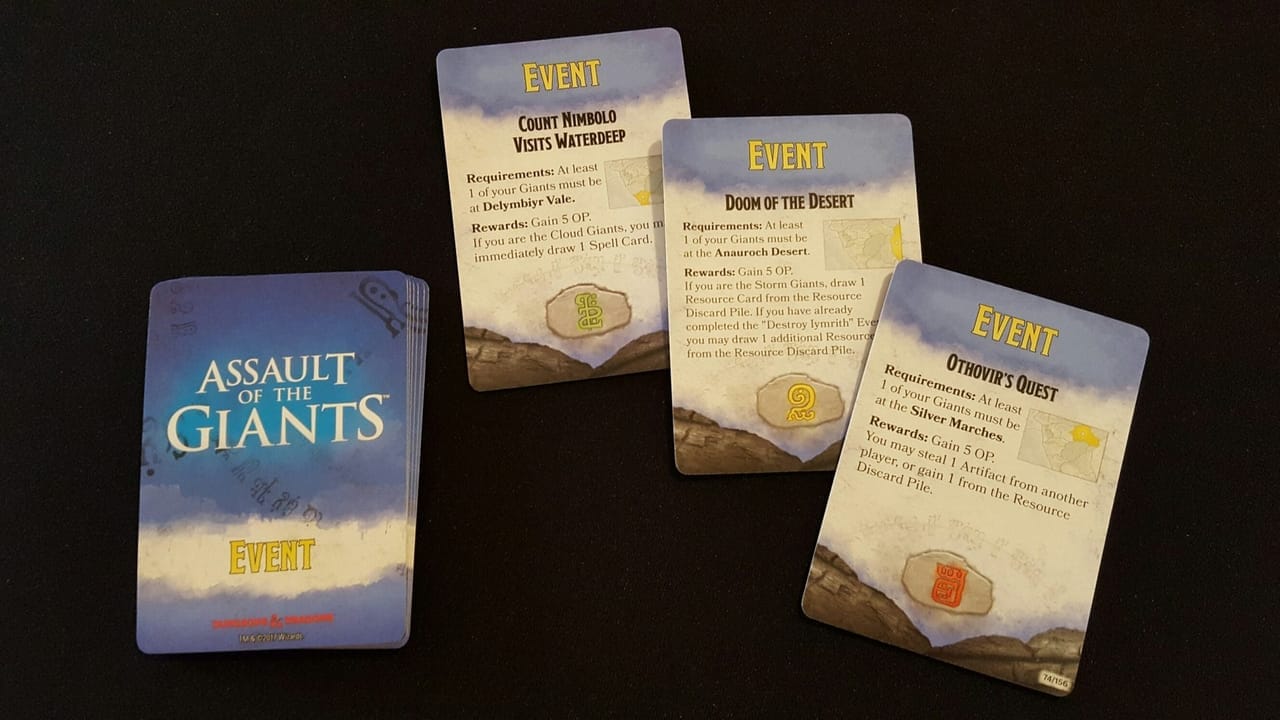
Assault of the Giants isn't a long game though, and if you choose to play all of your cards before resting, you will usually only see each card 2 to 3 times at the most. You can't simply play all of your cards in order to do a few really powerful actions, but if you take too many turns to rest, you will never be able to take any really potent actions. Finding the perfect balance between action-strength, and playing the right card exactly when you need it gives this game a really meaty and satisfying strategic layer. Even making educated decisions on when to rest isn't as straightforward as it seems, because even resting gets powered up the later you decide to do it, and the act of resting allows you to harass the other players with the Giantslayers, a sort-of-neutral group of humans that can be used to attack giants on the board. On top of all of the decisions of when to play each action, your opponents can see what you've already played at any point, and they will know what you have left to play, and they can plan accordingly. It's obvious when someone is gearing up for a big assault, not just via unit recruitment and positioning, but also based on the order of the actions that they take. Additionally, because each player only takes one action per turn, the cardplay keeps the game moving at a reasonable clip.
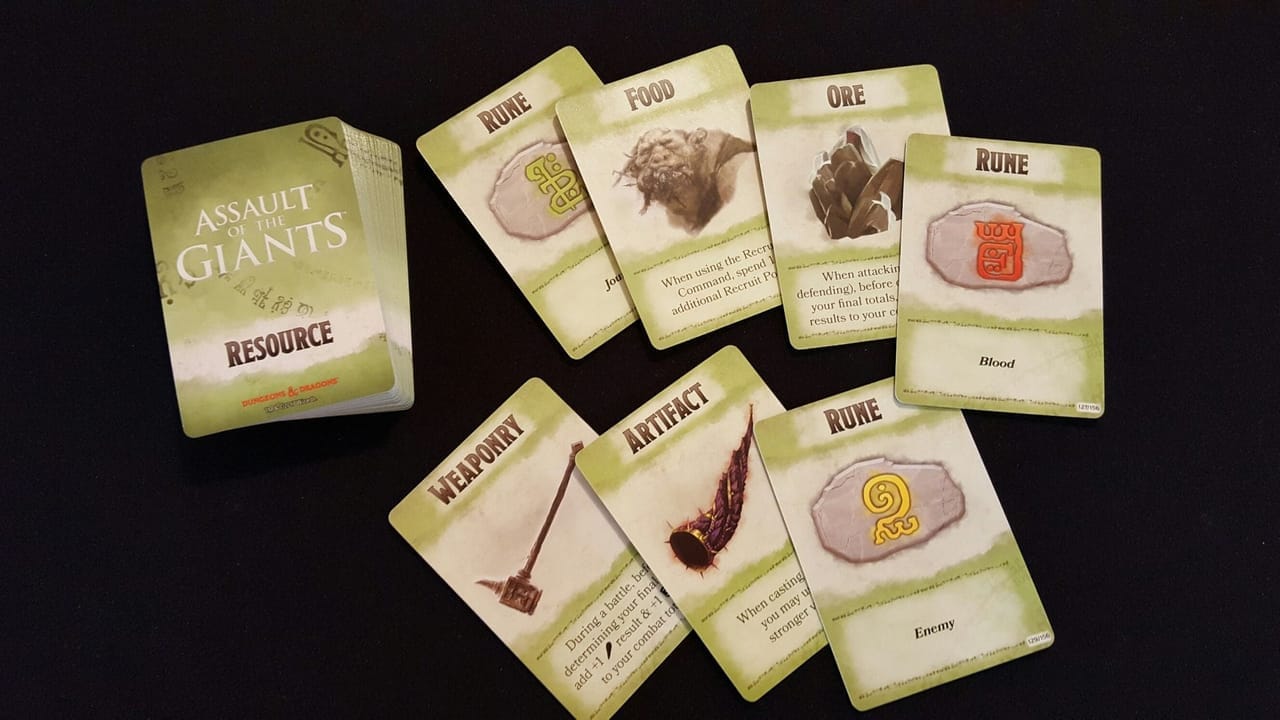
Because everyone can see what you've played, and can guess at what you will play, strategic unit placement and maneuvering can be as important, if not more important, than combat itself. Posturing can be as important as military action, and holding your attack action until late in a play-sequence can really give you leverage when trying to get to where you need to be, but it also tells your opponents when to expect to be attacked. Combat is nearly inevitable, so you need to be prepared to act when your opponents call your bluff, and you need to watch your foes' movements and cardplay so that you don't end up leaving yourself vulnerable to their military advancement. All of this is easier said than done though, and it highlights why this game is so satisfying. You know what you want to do, but figuring out how to accomplish it without leaving yourself too vulnerable, or spreading yourself too thin to try to cover every angle is tough. Because each card's power level is based on when you play them, you have to balance when to play them for maximal effect vs when to play them to get out ahead of your enemies.
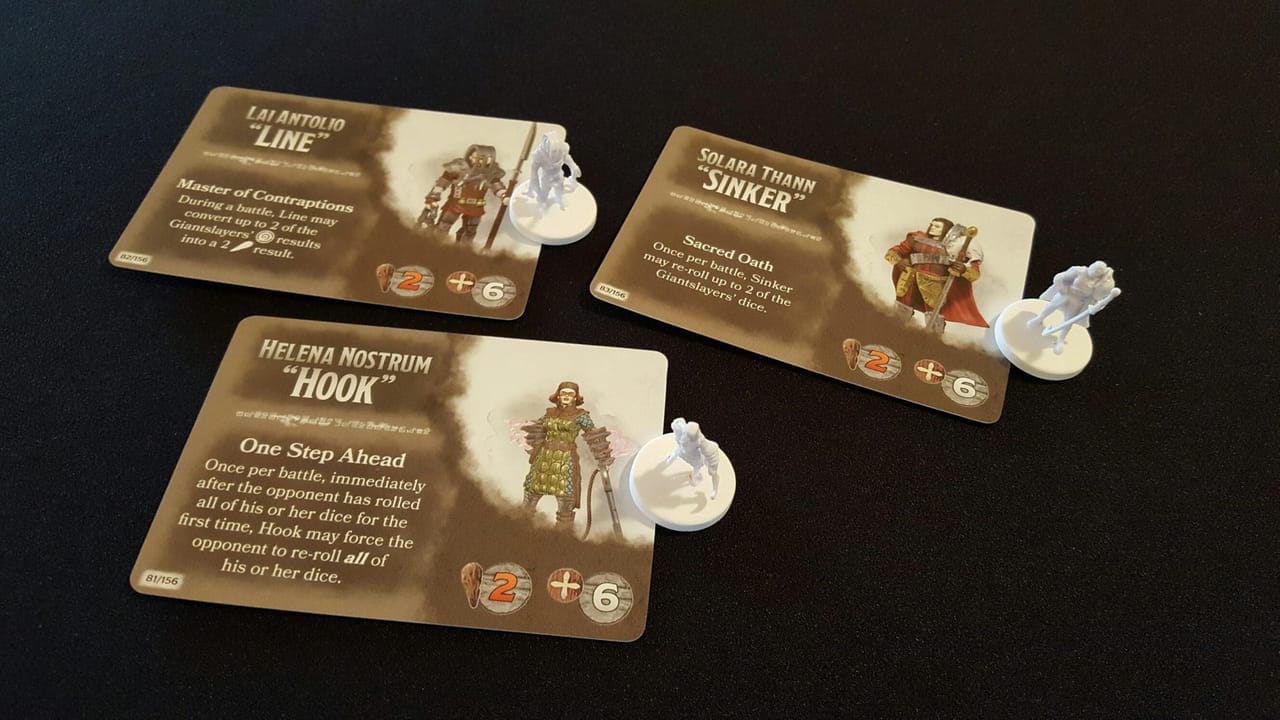
Combat itself isn't all that exciting in Assault of the Giants but, because combat is only a small part of the whole and not the main focus of the game, it's not as big of a turn off as it would be if this were a combat focused game. Combat is a fairly standard dice driven affair, although Spells and planning can have a huge influence on the outcome, so, while the dice to ultimately determine who wins and who loses, it's generally the person who is better prepared that comes out on top. Each fight only lasts a single round, so the battles are quick, and the Giants are hardy and hard to kill, especially the Champions, which are represented by the large plastic miniatures. This means that there are, more often than not with experienced players, only a few key battles that play out in each game. Because of this, the battles that are fought are usually interesting for everyone at the table, even if the mechanics of the battles themselves won't blow you away.
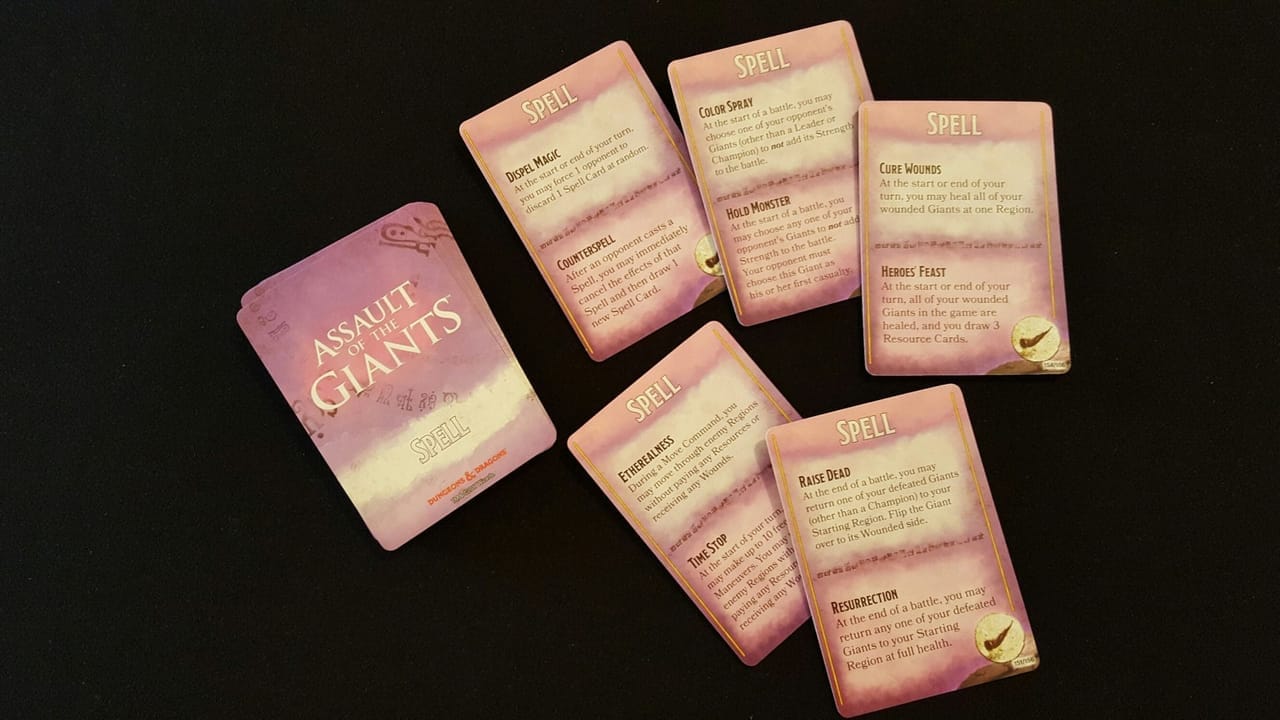
Assault of the Giants is a war game that is more than war for war's sake. The differing motivations and desires of each giant race really lend an organic air to the conflicts that arise when you play, and the conflicts and combat that arise during play feel organic, rather than forced. The cards-as-actions system is simple, yet meaty, and it almost never feels as if you have any gimme turns, nor does it feel like you ever need to waste a turn. Finding the right balance between powering up cards, acting quickly and outplaying your opponents is satisfying, and each race feels different both thematically and mechanically.
A note on player count: Assault of the Giants plays best with a full compliment of six players, although it is still enjoyable with fewer. The game lays out which Giant races should be played, and which should be set aside when playing with fewer players, but I've experimented with different combinations and the game still played well. Nothing beats a full compliment of players though, because the board fills up quickly as players expand away from their home regions, and the tension and fun rise dramatically as players can help but bump into each other as they try to accomplish their goals.
A note on “chrome”: I am very impressed with the component quality of Assault of the Giants, even if the art on the cards is a bit drab. The rulebook is well laid out and easy to reference, and makes learning the game a breeze. Every other Wizkids game that I've played has had component quality issues, but Assault of the Giants is entirely free of flaws, at least in the review copy that I have. The game looks great on the table, and the giant Champion figures are eye catching. Each race only has two Champion miniatures, with the rest of their forces represented by cardboard disks, but it really doesn't detract from the experience, and actually makes it fairly easy to assess military strength at a glance. If you are the type of person who can never have too many miniatures that might be a turn-off for you though.
The bottom line:
Assault of the Giants is a great example of the new breed of dudes-on-a-map games that shine a bright light on how creaky and rusty games like Risk have become. The game looks like it's all about combat, but each Giant race has their own goals and motivations, and combat is more a means to an end rather than the driving factor behind the gameplay. You certainly can wage war in this game, but you will almost certainly lose to other players who take a more goal-oriented approach if you only focus on fighting. Each Giant race feels unique, and the asymmetry between the different races' motivations, mechanics and goals keep the game interesting from play to play. The card-play is the highlight of Assault of the Giants, providing a crunchy and satisfying strategic layer to a game that is already full of positioning, posturing, and tension.
Get this game if:
You want a dudes-on-a-map game that is more than simply combat.
You like directly confrontational games that make you out-think and out-plan your opponents rather than simply out-roll them.
You like games that give you interesting goals and motivations, and let you approach them as you see fit.
You like competitive games with balanced asymmetry.
Avoid this game if:
You prefer cooperative games.
You want a game that focuses exclusively on combat.
The copy of Assault of the Gaints used for this review was provided by Wizkids.
Review Summary
Assault of the Giants is a great war game that puts more focus on strategy and decision making than on combat. Fights do break out though, and even though the combat mechanics themselves aren't super interesting, the events leading up to the fights, the speed at which they are resolved, and the importance of the outcome keep players engaged. The different factions feel different, both thematically and mechanically, and give the game a lot of life and replayability.
(Review Policy)Have a tip, or want to point out something we missed? Leave a Comment or e-mail us at tips@techraptor.net
